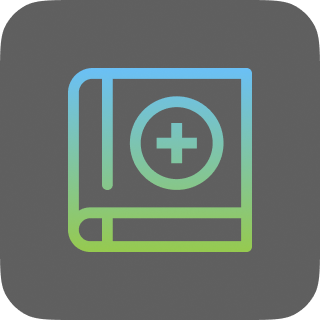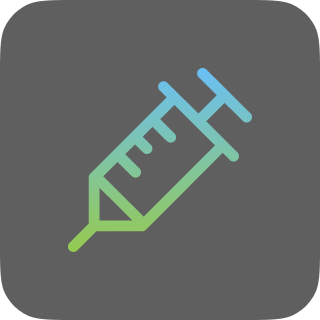Is this your child’s symptom?
- An allergic reaction of the eyes, usually from pollen
- The eyes are itchy and watery
Symptoms of Eye Allergies
- Itchy eyes (sometimes feels like burning or stinging)
- Increased tearing (watery eyes)
- Red or pink eyes
- Mild swelling of the eyelids
- No discharge or a sticky, stringy, mucus discharge
- No pain or fever
Triggers of Eye Allergies
- Cause. An allergic reaction of the eyes to allergic substance. The medical name for this is allergic conjunctivitis. The allergic substance is called an allergen. Most allergens float in the air. That’s how they get in the eyes. Here are the common ones:
- Pollens. Trees, grass, weeds and molds are the most common pollens. Tree pollens come in the spring. Grass pollens come in the summer. Weed pollens come in the fall. Pollens cause seasonal allergies. You can’t avoid pollens because they are in the air. Most eye allergies continue through the pollen season. They can last 4 to 8 weeks. Pollens cause seasonal eye allergies.
- Pets. Allergens can also be from cats, dogs, horses, rabbits and other animals. Pet allergens are in the air. They can also get in the eyes from the hands. Most people don’t keep a pet that they are allergic to. They only have sporadic allergy symptoms when they are exposed to a pet. These symptoms usually last a few hours. If you own the pet, your child will have symptoms all the time.
- House Dust. House dust contains many allergens. It always contains dust mites. If your humidity is high, it will contain mold. If someone with a cat visits you, they will bring cat dander with them. House dust causes year round, daily symptoms. The medical name for this is perennial eye allergies.
When to Call Us for Eye – Allergy
Contact Doctor Within 24 Hours
Contact Doctor During Office Hours
| Self Care at Home
|
Care Advice for Eye Allergy
- What You Should Know About Eye Allergies:
- An eye allergy most often is caused by pollen that gets in the eye.
- The eyes can itch, burn or sting.
- All of these symptoms can go away with allergy eye drops.
- Eye allergies are common. They occur in 10% of children.
- Here is some care advice that should help.
- Wash Allergens Off the Face:
- Use a wet washcloth to clean off the eyelids and face.
- Rinse the eyes with a small amount of warm water. Tears will do the rest.
- Then put a cold wet washcloth on the itchy eye.
- Prevention: wash the hair every night because it collects lots of pollen.
- Oral Allergy Medicines:
- If the nose is also itchy and runny, your child probably has hay fever. Hay fever is allergic symptoms of both the nose and eyes.
- Give your child an allergy medicine by mouth. This should get rid of the nose and the eye symptoms. Sometimes eye drops will not be needed.
- Long-acting allergy medicines (such as Zyrtec) are best.
- No prescription is needed. Age limit: 2 and older.
- This kind of medicine has 2 advantages over Benadryl. They cause less sedation and last up to 24 hours.
- Give allergy medicine every day. Do this until pollen season is over (about 2 months for each pollen).
- Antihistamine Eye Drops (Ketotifen) for Pollen Allergies – 1st Choice:
- Usually, an oral allergy medicine will control the allergic symptoms of the eye.
- If the eyes remain itchy and poorly controlled, buy some Ketotifen antihistamine eye drops. Ask your pharmacist to suggest a brand (such as Zaditor). No prescription is needed.
- Age: approved for 3 years and older.
- Dose: 1 drop every 12 hours in both eyes.
- For severe allergies, the use of ketotifen eye drops every day will help the most. Use these eye drops until pollen season is over.
- Older Antihistamine/Vasoconstrictor Eye Drops – 2nd Choice:
- Often, the eyes will feel much better after the allergic substance is washed out. Also, putting a cold wet washcloth on them usually makes the eyes feel better.
- If not, this type of eye drop can be used for added relief. Ask your pharmacist to suggest a brand (such as Visine-A). The A stands for antihistamine. No prescription is needed.
- Avoid vasoconstrictor eyedrops without an allergy medicine in them. These are eye drops without an A in the name, such as plain Visine. Reason: they only treat the redness, not the cause.
- Dose: 1 drop every 8 hours as needed.
- Do not use for over 5 days. Reason: will cause red eyes from rebound effect.
- Downside: doesn’t work as well as Ketotifen eye drops.
- Eye Drops: How to Use
- For a cooperative child, gently pull down on the lower lid. Put 1 drop inside the lower lid. Then ask your child to close the eye for 2 minutes. Reason: so the medicine will get into the tissues.
- For a child who won’t open his eye, have him lie down. Put 1 drop over the inner corner of the eye. If your child opens the eye or blinks, the eye drop will flow in. If he doesn’t open the eye, the drop will slowly seep into the eye.
- Contact Lenses:
- Children who wear contact lenses need to switch to glasses for a while.
- This will help the eye heal faster.
- What to Expect:
- If you know the cause of the allergy symptoms, try to avoid it. This is the case with animal allergies. The symptoms will not come back if there is no contact.
- But, you can’t avoid pollens because they are in the air. Most eye allergies continue through the pollen season. They can last 4 to 8 weeks.
- Call Your Doctor If:
- Itchy eyes aren’t better in 2 days with allergy treatment
- You think your child needs to be seen
- Your child becomes worse
And remember, contact your doctor if your child develops any of the ‘Call Your Doctor’ symptoms.
Disclaimer: this health information is for educational purposes only. You, the reader, assume full responsibility for how you choose to use it.
Copyright 2000-2023. Schmitt Pediatric Guidelines LLC.









